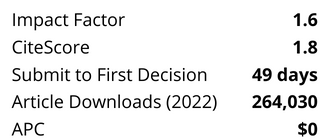A two-year comprehensive advanced oxidation processes (AOPs) pilot test was completed for a Singapore waterworks in 2011–2013. This study focused on oxidative removal of spiked organic contaminants with ozone and ozone-based AOPs (ozone application together with hydrogen peroxide, which is necessary for AOPs). The ‘optimized H2O2 dosage’ test philosophy was verified during the test period – keeping the residual ozone at 0.3 mg/L in the water for disinfection purpose by minimizing the H2O2 dosage. This study also monitored the bromate concentration in both ozone- and AOP-treated water, and all the samples reported below the laboratory detection limit (<5 µg/L), which is also lower than the WHO Guidelines for Drinking Water Quality (<10 µg/L). For comparison, a low pressure UV-based AOP test was conducted in the final stage of the study. The electrical energy per order (EEO) value is compared with ozone- and UV-based AOPs as well. The results indicated that ozone-based AOP with an optimized hydrogen peroxide dosage could be the most energy efficient option for this specific water matrix in terms of most selected compounds.
Skip Nav Destination
Article navigation
Research Article|
March 01 2015
A pilot-scale investigation of ozonation and advanced oxidation processes at Choa Chu Kang Waterworks
Jenny Wang;
Jenny Wang
a
Xylem Services GmbH
, Boschstr. 4, 32051 Herford
, Germany
*Corresponding author. E-mail: ejenny.wangjian@xyleminc.com
Search for other works by this author on:
Achim Ried;
Achim Ried
a
Xylem Services GmbH
, Boschstr. 4, 32051 Herford
, Germany
Search for other works by this author on:
Harald Stapel;
Harald Stapel
a
Xylem Services GmbH
, Boschstr. 4, 32051 Herford
, Germany
Search for other works by this author on:
Yaning Zhang;
Yaning Zhang
a
Xylem Services GmbH
, Boschstr. 4, 32051 Herford
, Germany
Search for other works by this author on:
Minghui Chen;
Minghui Chen
a
Xylem Services GmbH
, Boschstr. 4, 32051 Herford
, Germany
Search for other works by this author on:
Wui Seng Ang;
Wui Seng Ang
b
PUB
, Singapore's National Water Agency
, 40 Scotts Road #14–01 Environment Building, Singapore 228231
, Singapore
Search for other works by this author on:
Rongjing Xie;
Rongjing Xie
b
PUB
, Singapore's National Water Agency
, 40 Scotts Road #14–01 Environment Building, Singapore 228231
, Singapore
Search for other works by this author on:
Ankur Duarah;
Ankur Duarah
b
PUB
, Singapore's National Water Agency
, 40 Scotts Road #14–01 Environment Building, Singapore 228231
, Singapore
Search for other works by this author on:
Lifeng Zhang;
Lifeng Zhang
b
PUB
, Singapore's National Water Agency
, 40 Scotts Road #14–01 Environment Building, Singapore 228231
, Singapore
Search for other works by this author on:
Mong Hoo Lim
Mong Hoo Lim
b
PUB
, Singapore's National Water Agency
, 40 Scotts Road #14–01 Environment Building, Singapore 228231
, Singapore
Search for other works by this author on:
Water Practice and Technology (2015) 10 (1): 43–49.
Citation
Jenny Wang, Achim Ried, Harald Stapel, Yaning Zhang, Minghui Chen, Wui Seng Ang, Rongjing Xie, Ankur Duarah, Lifeng Zhang, Mong Hoo Lim; A pilot-scale investigation of ozonation and advanced oxidation processes at Choa Chu Kang Waterworks. Water Practice and Technology 1 March 2015; 10 (1): 43–49. doi: https://doi.org/10.2166/wpt.2015.006
Download citation file:
Sign in
Don't already have an account? Register
Client Account
You could not be signed in. Please check your email address / username and password and try again.
Could not validate captcha. Please try again.
eBook
Pay-Per-View Access
$38.00




%20cropped.png?versionId=5954)